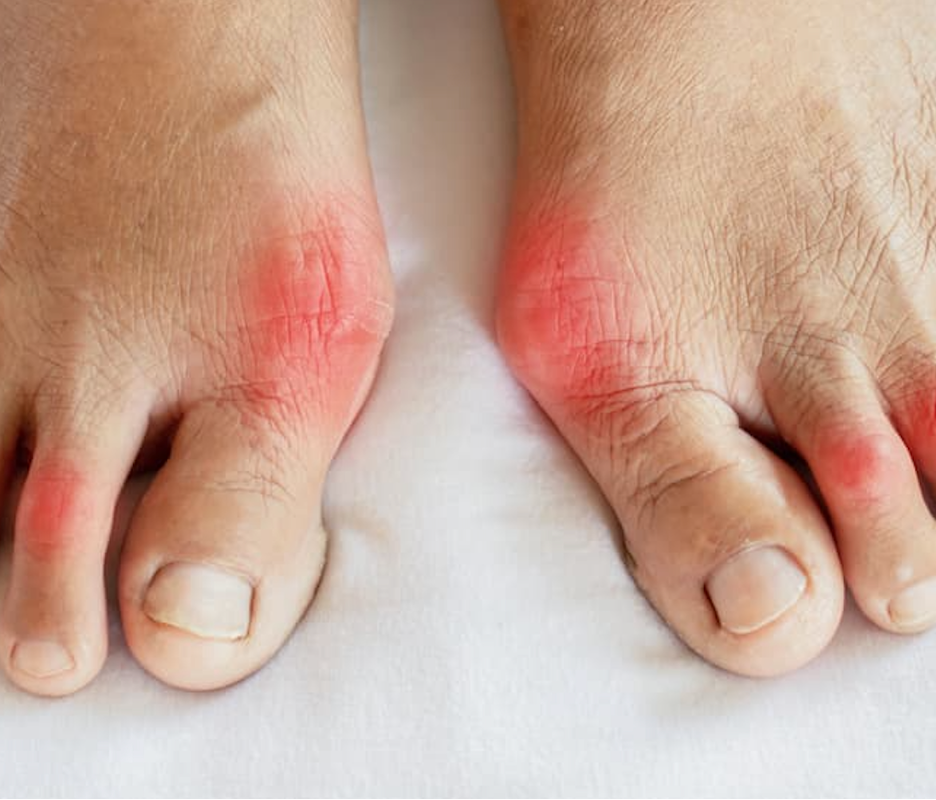News
Article
Gout’s Prevalence Among Vulnerable Populations: A Deeper Look into the Painful Disease
Author(s):
Despite commonly understood symptoms and efficacious treatments, the stigmatizing nature of gout has caused significant setbacks to curbing its impact on Americans.
Gout, the most common type of systemic inflammatory arthritis, has been steadily increasing in prevalence worldwide.
Its incidence more than doubled between the 1960s and 1990s, currently affecting an estimated 3.9%, or 8.3 million, of adults in the United States.1 Commonly accompanied by joint swelling or tenderness, severe pain, and red or shiny skin over the affected joint, the signs and symptoms of gout generally develop rapidly over a period of a few hours and persist for ≤10 days.2 It’s known to most significantly impact men, patients aged ≥65 years, those with high serum uric acid, and post-menopausal women.
For as well-understood the prevalence, signs and burdens of gout have become among Americans, it is the impacted patients and clinicians who fully understand the underlying effects of stigma surrounding the disease, as well as it disparate impacts on patients from diverse backgrounds. Additionally, while diet plays a role, genetics also significantly contribute to diagnosis. Most individuals with gout have kidneys that don't efficiently filter uric acid, leading to its buildup and continuing damage to the joints even between attacks.
“Social determinants of health play a significant role in health disparities, especially regarding access to care,” said David Mandel, MD, a rheumatologist associated with the Alliance for Gout Awareness. “Limited medical coverage can lead individuals to avoid seeking treatment until they experience severe gout symptoms. They might use emergency rooms or urgent care as their primary healthcare providers, missing out on necessary tests and medications. This delay in care can result in higher healthcare costs and, tragically, amputations in severe cases.”
However, Mandel said there is a misconception that gout is challenging to treat. In truth, gout is very treatable and controllable, with effective medications available alongside lifestyle changes.
“There are effective oral medications for lowering uric acid levels, which can prevent gout attacks and complications,” he explained. “Regular and consistent treatment is crucial for managing gout and its complications effectively.”

Health Disparities in Gout
“Health disparities encompass various aspects, including socioeconomic status, geographical location, healthcare accessibility, health insurance coverage, and genetic factors,” Nehad Soloman, MD, a rheumatologist at the Arizona Arthritis & Rheumatology Associates, told HCPLive. “For example, in areas like Phoenix, individuals of African American or Hispanic descent may face barriers, whether cultural or access-related, to seeking medical care, including rheumatology services.”
He explained some patients may avoid medical care due to the fear of receiving a diagnosis. Additionally, those with limited healthcare access, such as individuals without insurance or those with high deductibles, may struggle to see a rheumatologist or access treatment. The evolving landscape of healthcare policies has also introduced challenges, such as high deductibles affecting the affordability of care.
Discussion of Socioeconomic Factors Influencing Gout Dissimilarities
“To truly understand the complex link between social determinants of health and health disparities in rheumatology, we need to raise awareness and delve into the nuances of this issue,” Andrew Sharobeem, DO, a rheumatologist linked to the Arizona Arthritis & Rheumatology Associates, told HCPLive. “There's a significant connection between social disparities and individuals who come from a lower socioeconomic status and less favorable upbringings, which can have profound effects on both their physical and mental health.”
Factors such as limited access to healthcare or even distrust in the healthcare system can be prevalent in such environments. These populations may have an additional higher likelihood of comorbid conditions, including hypertension, diabetes, metabolic syndrome, and even an increased risk of autoimmune diseases.
The Patient Perspective
Gary Ho, a patient advocate with the Alliance for Gout Awareness, discussed his hesitancy about initially visiting a clinician in his early journey with gout. As a college student, he suddenly experienced ankle pain and swelling while walking across campus, which continued to worsen throughout the day. He eventually reached out to his father, who suggested he see a doctor because gout ran in their family. However, his primary care physician told him he was too young to have gout. Therefore, he lived with unmanaged gout for years despite reaching out to multiple clinicians.
“I was worried doctors wouldn't believe me when I spoke about gout and asked for help,” Ho told HCPLive. “Physicians didn't seem willing or able to understand my patient journey, which led to a lack of proper treatment and management.”
Ho explained people seem to perceive gout differently than other diseases, often blaming individuals for their condition.
“They think you're eating or drinking too much and not controlling yourself,” he said. “There's a lack of empathy and understanding. This stigma affects everyone with gout, but I believe it's more pronounced among younger individuals who don't want to be associated with a condition perceived as something they brought upon themselves. It makes them reluctant to seek help because they fear not being heard or understood. Stigma can drive individuals into dark places mentally, leading to feelings of isolation and misunderstanding.”
Addressing Disparities in Gout
Sharobeem emphasized diversity encompasses not just skin color or origin, but also the understanding that certain populations are more susceptible to autoimmune diseases.
“The first step is raising awareness of these disparities and understanding the various contributing factors,” he said. “Without this awareness and data collection, it's challenging to provide the necessary support and care. The efforts begin with creating awareness within these communities and addressing their specific needs. Healthcare providers need to build trust within these communities, and this starts with the first impression. It's about being approachable, understanding the unique challenges patients face, and establishing a rapport based on common courtesy and empathy.”
He believed healthcare providers should aim to treat each patient as a whole person, not just a checklist of symptoms. By retaining the humanity in medicine and fostering a true human-to-human connection, clinicians may be able to bridge these disparities and ensure better healthcare outcomes for all patients, regardless of their background or circumstances.
What Can Clinicians Do?
"To reduce health disparities in rheumatology, it's crucial for healthcare providers to cultivate empathy and understanding,” Soloman said. “They should acknowledge the cultural and social dynamics that impact patients' healthcare decisions and experiences. Establishing a personal connection with patients and acknowledging their unique backgrounds can help overcome initial barriers to care.”
Clinicians emphasize efforts to creating awareness within these communities and addressing their specific needs. They should focus on building trust within these communities, starting with the first impression.
“It's about being approachable, understanding the unique challenges patients face, and establishing a rapport based on common courtesy and empathy,” Sharobeem noted. “Healthcare providers should aim to treat each patient as a whole person, not just a checklist of symptoms.”
He explained the first step is raising awareness of these disparities and understanding the various contributing factors. Without this awareness and data collection, it is challenging to provide the necessary support and care.
In a similar vein, Mandel emphasized rheumatologists and healthcare providers should strive to be more approachable and empathetic.
“It's essential to treat patients as a whole, considering their backgrounds and experiences rather than focusing solely on their medical conditions,” he said. “Establishing trust and rapport with patients is crucial. Providers should engage in outreach and education efforts, particularly for economically disadvantaged populations. This includes making patients aware of available treatments and emphasizing that gout is a treatable condition. Education and awareness are key components of reducing health disparities.”
Ho believes doctors should listen more attentively to their patients and not dismiss their concerns.
“There's a difference between temporarily alleviating pain and proactively managing the condition,” he said. “If healthcare providers can grasp the importance of proactive management, it would make a significant difference for the gout community.”
By fostering a connection with patients, clinicians can begin to bridge these disparities and ensure better healthcare outcomes for all patients, regardless of their background or circumstances.
References
- Quick facts: Gout and chronic kidney disease. National Kidney Foundation. (2023, May 3). https://www.kidney.org/atoz/content/gout/patient-facts
- Gout. NHS inform. (n.d.). https://www.nhsinform.scot/illnesses-and-conditions/muscle-bone-and-joints/conditions/gout





